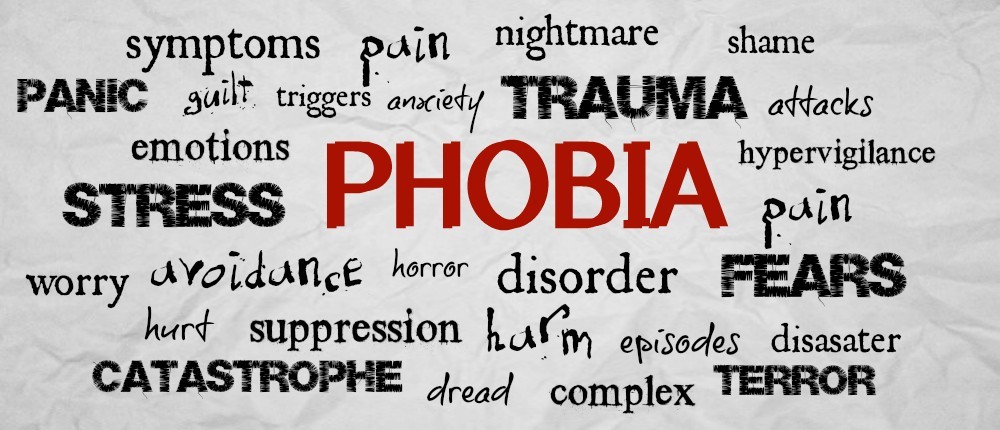Top 10 Phobias - Types of phobia
A phobia is an irrational, intense, and persistent fear of certain situations, activities, things, animals, or people. The main symptom of this disorder is the excessive and unreasonable desire to avoid the feared stimulus. When the fear is beyond one’s control, and if the fear is interfering with daily life, then a diagnosis under one of the anxiety disorders can be made.

Phobia is also described as an unreasonable or abnormal fear.
Here is a list of Top 10 Phobias.
- Arachnophobia: Fear of spiders. Chronic arachnophobia even fears the pictures of spiders.
- Social Phobia: Fear of social setups. It should not be confused with shyness; it is really the dread of social situations. It may emanate from several reasons like being scrutinized by others or getting evaluated negatively in social situations or feeling humiliated by one’s own actions etc. Social phobia is likely to take its root in the formative years of human development i.e. childhood or teens.
- Aerophobia: Fear of flying. such people suffer from the fright of travel by plane, obviously. This kind of phobia is often paired with claustrophobia (refer to no 5).
- Agoraphobia: Fear and so the avoidance of any place or situation where escape or any help might not be available or the escape route or method is complicated. It aggravates when anxiety or panic-stricken and it may be self-perpetuating. Chronic agoraphobes believe that the only safe place in the world is home and therefore they prefer to confine themselves within the four walls of their abode.
- Claustrophobia: The fear of the confined spaces or more specifically, the fear of being trapped in small confined spaces. People who suffer from this phobia prefer to stay away from elevators, small cupboards, or space under the stairwell, etc. Panic attacks can be experienced if the escape is not available or it is complicated.
- Acrophobia: Fear of heights. People who suffer from fear of heights may experience panic attacks. They may not be in a position to climb down and may put themselves in danger if they can not do so. Do not confuse acrophobia with vertigo since vertigo involves only a dizzy or spinning sensation and is not necessarily caused by heights.
- Emetophobia: Fear of vomit. People with this phobia find the sight or smell of vomit extremely appalling and therefore, they go to extraordinary lengths to avoid the stuff.
- Carcinophobia: Fear of cancer. We all know that cancer is not a contagious disease. However, a carcinophobe believes that he has contracted cancer because he touched a cancer patient.
- Brontophobia: Fear of thunderstorms. It is also termed astraphobia. People who suffer from this phobia make sure to hide away from thunder and lightning otherwise they may undergo panic attacks and difficulty breathing.
- Necrophobia: Fear of death, dead things, coffins, and corpses. It may get derived from the fear of being buried alive.
Phobias are a common form of anxiety disorder. An American study by the National Institute of Mental Health (NIMH) found that between 8.7% and 18.1% of Americans suffer from phobias. Broken down by age and gender, the study found that phobias were the most common mental illness among women in all age groups and the second most common illness among men older than 25. Some phobias are generated from the observation of a parent’s or sibling’s reaction. The observer then can take in the information and generate a fear of whatever they experienced
Phobias are not generally diagnosed if they are not particularly distressing to the patient and if they are not frequently encountered. If a phobia is defined as "impairing to the individual", then it will be treated after being measured in context by the degree of severity. A large percent of the American population is afraid of public speaking, which could range from mild uncomfortability, to intense anxiety that inhibits all social involvement.